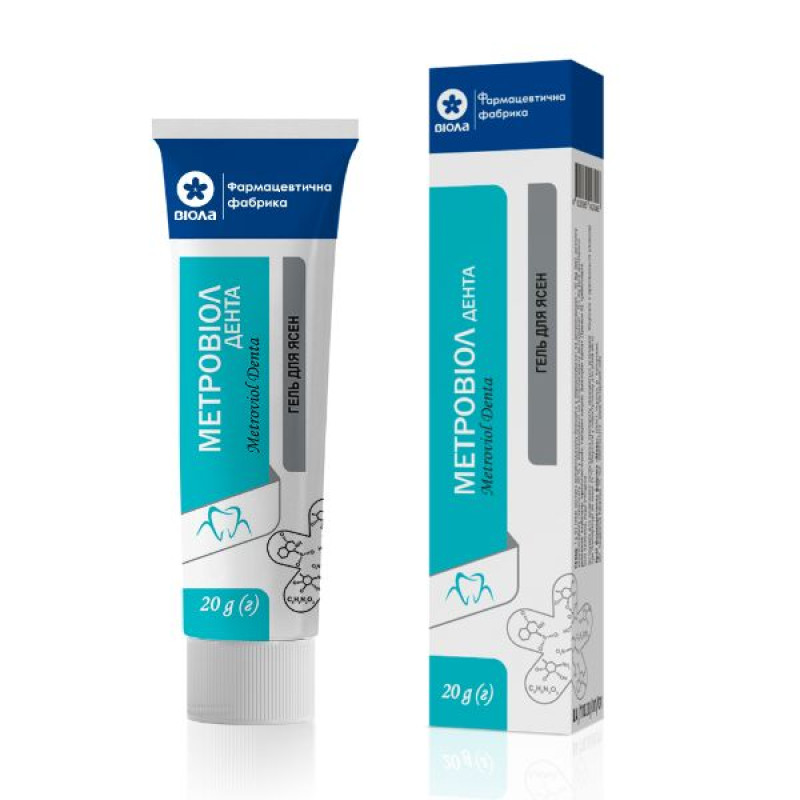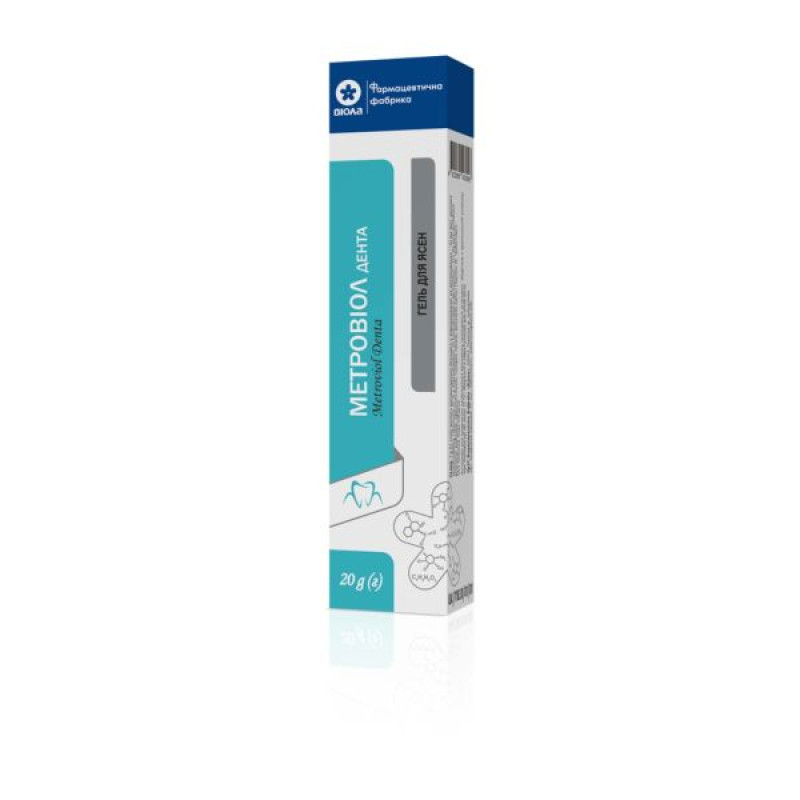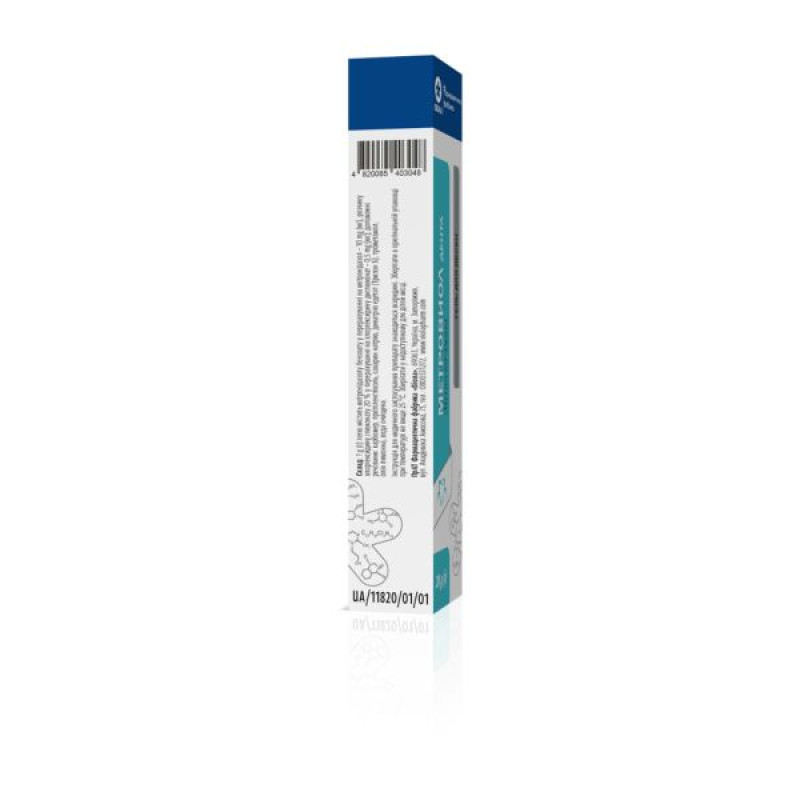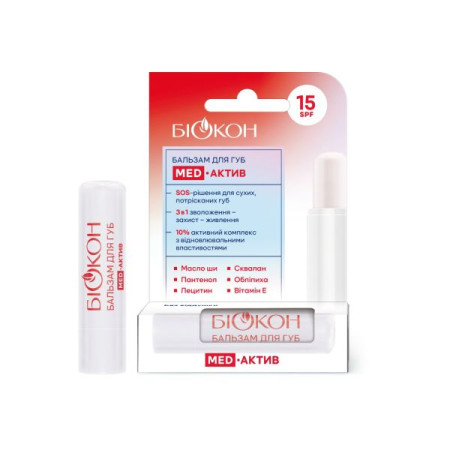Metroviol Denta gum gel tube 20 g

Instructions Metroviol Denta gum gel tube 20 g
Composition
active ingredients: metronidazole benzoate, chlorhexidine gluconate;
1 g of gel contains metronidazole benzoate in terms of metronidazole - 10 mg, chlorhexidine gluconate solution 20% in terms of chlorhexidine digluconate - 0.5 mg;
excipients: carbomer, propylene glycol, sodium saccharin, disodium edetate (Trilon B), trometamol, lemon oil, purified water.
Dosage form
Gum gel.
Main physicochemical properties: white or almost white gel with a specific odor.
Pharmacotherapeutic group
Antimicrobial and antiseptic preparations for topical use in dentistry. ATC code A01A B.
Pharmacological properties
Pharmacodynamics.
Antimicrobial combination drug for the complex treatment and prevention of certain infectious and inflammatory diseases of the oral cavity.
The effectiveness of the drug is due to the presence of two antibacterial components - metronidazole and chlorhexidine.
Metronidazole is a nitroimidazole derivative with antiprotozoal and antibacterial activity. It is active against anaerobic bacteria that cause periodontal disease: Porphyromonas gingivalis, Prevotella intermedia, Prevotella denticola, Fusobacterium fusiformis, Wolinella recta, Eikenella corrodens, Borrelia vincenti, Bacteroides melaninogenicus, Selenomonas spp.
Chlorhexidine is an antiseptic with bactericidal action. Its action is to increase the permeability of bacterial cell walls, as a result of which chlorhexidine penetrates into the bacterial cytoplasm, which leads to cell death. Active against a wide range of vegetative forms of gram-negative (Treponema spp., Neisseria gonorrheae, Trichomonas spp., Chalmydia spp., Ureaplasma spp., Bacteroides fragilis) and gram-positive microorganisms, as well as yeasts, dermatophytes and lipophilic viruses.
Some strains of Pseudomonas spp. and Proteus spp. have low sensitivity to chlorhexidine, while acid-fast bacteria and bacterial spores are not susceptible to the action of this substance. Chlorhexidine does not impair the functional activity of lactobacilli.
Pharmacokinetics.
The minimum inhibitory concentration (MIC50) of metronidazole for anaerobic bacteria is below 1 μg/ml. When the drug is applied topically (applied to the gums), the concentration of metronidazole in the gum area is significantly higher than when the drug is applied orally, and the level of systemic absorption of metronidazole when applied topically is significantly lower than when it is applied orally. The drug is well absorbed from the gastrointestinal tract and can be detected at an inhibitory level for bacteria in the blood and saliva within 1 hour after administration. Metronidazole is mainly metabolized in the liver. The main route of excretion of metronidazole and its metabolites is the kidneys. Reduced renal function does not change the pharmacokinetics of a single dose of metronidazole.
In case of ingestion of excess chlorhexidine during its topical application as part of a dental gel, approximately 1% of the dose that reaches the stomach is absorbed from the digestive tract. Chlorhexidine does not accumulate in the body and is minimally metabolized.
Indication
For the treatment of infectious and inflammatory diseases of the periodontium and oral mucosa:
- catarrhal hypertrophic gingivitis, acute and chronic course;
- acute ulcerative-necrotic gingivitis (Vincent's gingivitis);
- generalized periodontitis, chronic and acute course;
- trauma to the oral mucosa caused by dentures;
- alveolitis (inflammation of the socket after tooth extraction)
For the prevention of exacerbations of chronic gingivitis and periodontitis.
Contraindication
Hypersensitivity to metronidazole, chlorhexidine, as well as nitroimidazole derivatives and any components included in the composition of the drug.
Contraindicated in patients with confirmed blood dyscrasias or a history of blood dyscrasias.
Contraindicated in patients with diseases of the peripheral and central nervous system.
Children's age (up to 18 years).
Special safety precautions
Avoid getting the gel in your eyes.
Interaction with other medicinal products and other types of interactions
When applied topically at recommended doses, no systemic interactions of Metroviol Denta gel with other drugs have been identified. However, caution should be exercised when prescribing Metroviol Denta gel with certain drugs.
Warfarin and other coumarin anticoagulants. Metronidazole enhances the anticoagulant effect, leading to a prolongation of prothrombin time.
Metronidazole inhibits CYP2C9 and CYP3A4, increases circulating levels of warfarin sodium, and enhances warfarin-induced hypoprothrombinemia.
Disulfiram. Concomitant use increases the toxicity of the drugs, which may lead to the development of neurological symptoms.
Phenobarbital, phenytoin, hydantoin-based anticonvulsants. When used simultaneously with metronidazole, the antimicrobial activity of the latter decreases. The reason is the accelerated metabolism of metronidazole.
Potentiation of phenytoin by metronidazole is likely through inhibition of phenytoin-metabolizing enzymes.
Alcohol: Metronidazole causes alcohol intolerance. Concomitant administration of alcohol and metronidazole may cause symptoms of toxic psychosis, nausea, hypotension, tachycardia, diaphoresis or dyspnea, and in rare cases severe hypotension and shock may occur. These reactions usually occur within 24 hours but may occur up to 2 weeks after alcohol intake.
Application features
The use of the drug may cause allergic reactions (skin rash, itching, urticaria, angioedema and anaphylaxis, including shock).
You should not drink alcohol while using the drug, as this may cause stomach cramps, nausea, vomiting, headache, and flushing.
Metronidazole should not be used concomitantly with disulfiram, as it may cause psychotic reactions and confusion.
Prolonged use may cause brown discoloration of the teeth and tongue.
The use of Metroviol Denta gel may cause temporary changes in taste sensations.
If symptoms persist or worsen, or if new symptoms develop, you should stop using this medicine and consult a doctor.
Use during pregnancy or breastfeeding
The medicine should not be used during pregnancy.
Breastfeeding should be discontinued during treatment with the drug.
Ability to influence reaction speed when driving vehicles or other mechanisms
It is not known whether the use of the combination of chlorhexidine and metronidazole affects the ability to drive vehicles or potentially dangerous mechanisms.
Method of administration and doses
Locally, for dental use only!
Use the drug after consulting a dentist.
For adults with gingivitis, apply Metroviol Denta gel to the gums using a finger massage or a cotton swab 2 times a day. After applying the gel, do not rinse your mouth, drink or eat for 30 minutes. The average duration of treatment is 7–10 days.
For periodontitis: after removing dental plaque, periodontal pockets should be treated with Metroviol Denta gel, and the gel should also be applied to the gums. The duration of application is 30 minutes. The number of procedures depends on the severity of the disease. In the future, the patient applies the gel independently. Metroviol Denta should be applied to the gum area 2 times a day for 7–10 days.
To prevent exacerbations of chronic gingivitis and periodontitis, Metroviol Denta gel is applied to the gums 2 times a day for 7–10 days. Preventive treatment courses should be carried out 2–3 times a year.
To treat post-extraction alveolitis after tooth extraction, treat the socket with Metroviol Denta gel, then the patient applies the gel independently 2–3 times a day for 7–10 days.
To prevent exacerbation of chronic gingivitis and periodontitis, Metroviol Denta gel should be applied 2 times a day to the affected areas for 7–10 days. Preventive courses should be carried out 2–3 times a year.
To prevent exacerbations of chronic gingivitis and periodontitis, with bleeding gums and bad breath, in the evening after hygienic brushing of the teeth, Metroviol Denta gel should be rubbed into the gum area for 2–3 minutes using a finger massage or a cotton swab. After rubbing, spit it out, do not rinse your mouth.
In order to prevent exacerbations in patients with catarrhal gingivitis and mild generalized periodontitis, in the morning and evening after hygienic brushing of the teeth with a finger massage or a cotton swab, Metroviol Denta gel should be rubbed for 2–3 minutes, after the procedure, one should refrain from rinsing the mouth and drinking liquids for one hour. Prophylactic courses of treatment lasting 2 weeks should be carried out 2–3 times a year.
The use of the drug Metroviol Denta does not replace hygienic tooth brushing, therefore, during treatment with the drug, tooth brushing should be continued.
Children.
It is not recommended to prescribe the drug to children (under 18 years of age).
Overdose
Cases of overdose of Metroviol Denta gel when applied topically are unknown.
Accidental or intentional ingestion of large amounts of gel may lead to exacerbation of adverse reactions initially caused by metronidazole (chlorhexidine is practically not absorbed from the gastrointestinal tract). These reactions include nausea, vomiting, dizziness. In more serious cases, paresthesia and convulsions may occur. High doses and prolonged systemic treatment with metronidazole are associated with the development of leukopenia, neutropenia, an increased risk of peripheral neuropathy and central nervous system toxicity. Keep out of the reach of children. In case of ingestion, seek medical attention immediately. Treatment of overdose should include gastric lavage and, if necessary, symptomatic therapy.
Adverse reactions
Immune system disorders: Allergic reactions including skin rash, pruritus, urticaria, angioedema, anaphylaxis including anaphylactic shock. One case of eyelid edema as a manifestation of angioedema has been described.
From the nervous system: headache.
On the part of the organs of vision: if the gel gets on the area close to the eyes, tearing, dryness of the mucous membrane and short-term redness may occur.
Gastrointestinal: metallic taste in the mouth, bitter taste in the mouth, nausea, possible appearance of plaque in the oral cavity, on the surface of the teeth and tongue.
Application site reactions: burning at the application site, irritation at the application site.
Clinical trial data
Placebo-controlled studies with sufficient data on adverse effects when using the combination of chlorhexidine and metronidazole were not available.
Post-marketing data.
Adverse reactions identified during post-marketing experience with the combination of chlorhexidine and metronidazole are listed below. The frequency of adverse reactions is given using the following convention: very common (≥ 1/10), common (≥ 1/100 to < 1/10), uncommon (≥ 1/1,000 to < 1/100), rare (≥ 1/10,000 to < 1/1,000), very rare (< 1/10,000) and not known (cannot be estimated from the available data).
On the part of the immune system: very rarely - hypersensitivity reactions.
Skin and subcutaneous tissue disorders: very rarely - angioedema.
Oral use of chlorhexidine may cause hypersensitivity reactions, including symptoms of anaphylaxis, mouth irritation, discoloration of teeth and tongue, increased tartar formation, altered taste, bitter taste in the mouth, and burning, numbness, dryness, and soreness of the oral mucosa.
During post-marketing use, urticaria with swelling of the face, lips, mouth, throat and itching sensation, difficulty breathing, hoarseness, fainting, as well as allergic reactions (anaphylaxis) in the oral cavity on open wounds have been reported.
If these or other undesirable effects occur, treatment should be discontinued and a doctor should be consulted.
Reporting of suspected adverse reactions
Reporting adverse reactions after the registration of a medicinal product is important. This allows monitoring of the benefit/risk ratio when using this medicinal product. Medical and pharmaceutical professionals, as well as patients or their legal representatives, should report all cases of suspected adverse reactions and lack of efficacy of the medicinal product via the Automated Information System for Pharmacovigilance at the link: https://aisf.dec.gov.ua.
Expiration date
3 years.
Do not use the medicine after the expiry date stated on the packaging.
Storage conditions
Store in original packaging at a temperature not exceeding 25 ° C. Keep out of the reach of children.
Packaging
20 g in aluminum or laminate tubes in a pack or without a pack.
Vacation category
Without a prescription.
Producer
PrJSC Pharmaceutical Factory "Viola".
Location of the manufacturer and its business address.
Ukraine, 69063, Zaporizhia, 75 Academician Amosov St.
There are no reviews for this product.
There are no reviews for this product, be the first to leave your review.
No questions about this product, be the first and ask your question.











